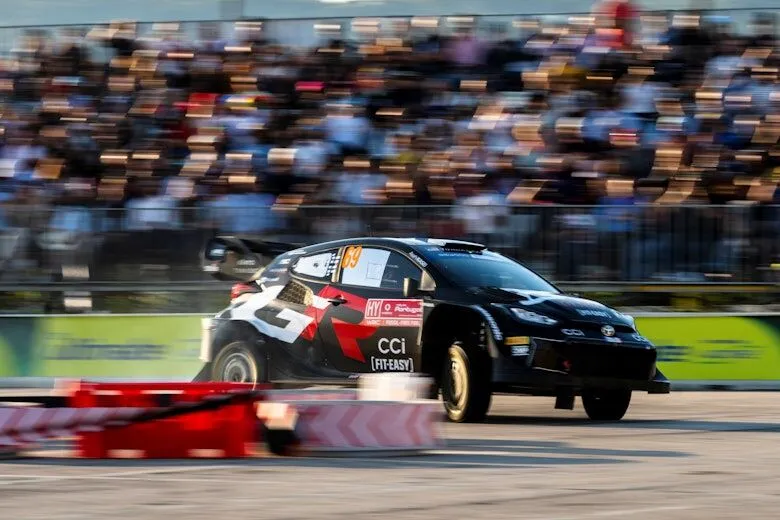Alasdair Lindsay, a prominent figure at DirtFish, advocates for the integration of exhibition driving into World Rally Championship (WRC) itineraries to enhance engagement and attract new fans.
At the onset of a WRC event, the rallying community often echoes the sentiment: “The real rally starts tomorrow.” This phrase underscores the importance of the opening-stage superspecials, which are perceived by hardcore rally enthusiasts as a mere spectacle for the masses. However, Lindsay argues that these superspecials serve a crucial role in fostering accessibility and engagement with the sport.
The superspecials, designed for spectator appeal, encounter a significant drawback, as witnessed in Rally Portugal. Drivers, constrained by concerns over tire wear that may impact subsequent stages, refrain from delivering a captivating performance. Thierry Neuville and Kalle Rovanperä echoed these sentiments, highlighting the mismatch between the exhibition aspect and competitive constraints.
Proposals to address this issue include allocating dedicated tires for superspecials or scheduling them strategically within the itinerary. Lindsay suggests incorporating superspecials with shakedown events to utilize partially worn tires effectively.
However, Lindsay emphasizes that the problem extends beyond tire regulations. He underscores the necessity of integrating exhibition driving seamlessly into WRC itineraries, akin to essential components like service zones and refueling stations. This approach acknowledges the importance of storytelling and spectacle in rallying, beyond traditional stage times.
Lindsay challenges the fixation on stage times and advocates for a renewed focus on the essence of rallying, which encompasses both speed and precision. He proposes designated zones for exhibition driving, designed explicitly for fan engagement and social media content creation.
For purists wary of diluting the sport’s competitive integrity, Lindsay offers a pragmatic perspective, emphasizing the need for adaptation to sustain interest and relevance in a changing landscape. He warns against dismissive attitudes towards exhibition driving, highlighting its potential to captivate new audiences and invigorate the rally community.
Ultimately, Lindsay calls for proactive measures to integrate exhibition driving effectively into WRC events, ensuring that drivers can deliver thrilling performances without compromising competitive objectives. By prioritizing fan engagement and embracing innovation, the WRC can evolve while preserving its core identity and appeal.

